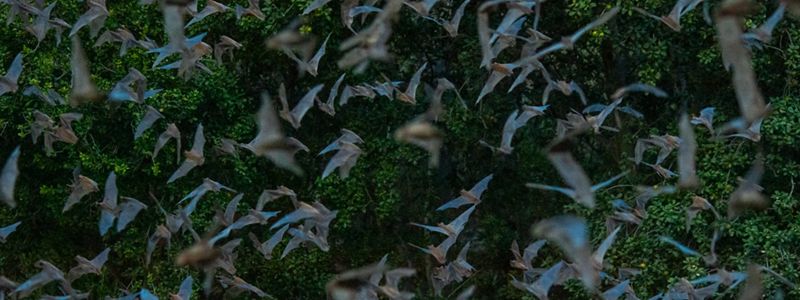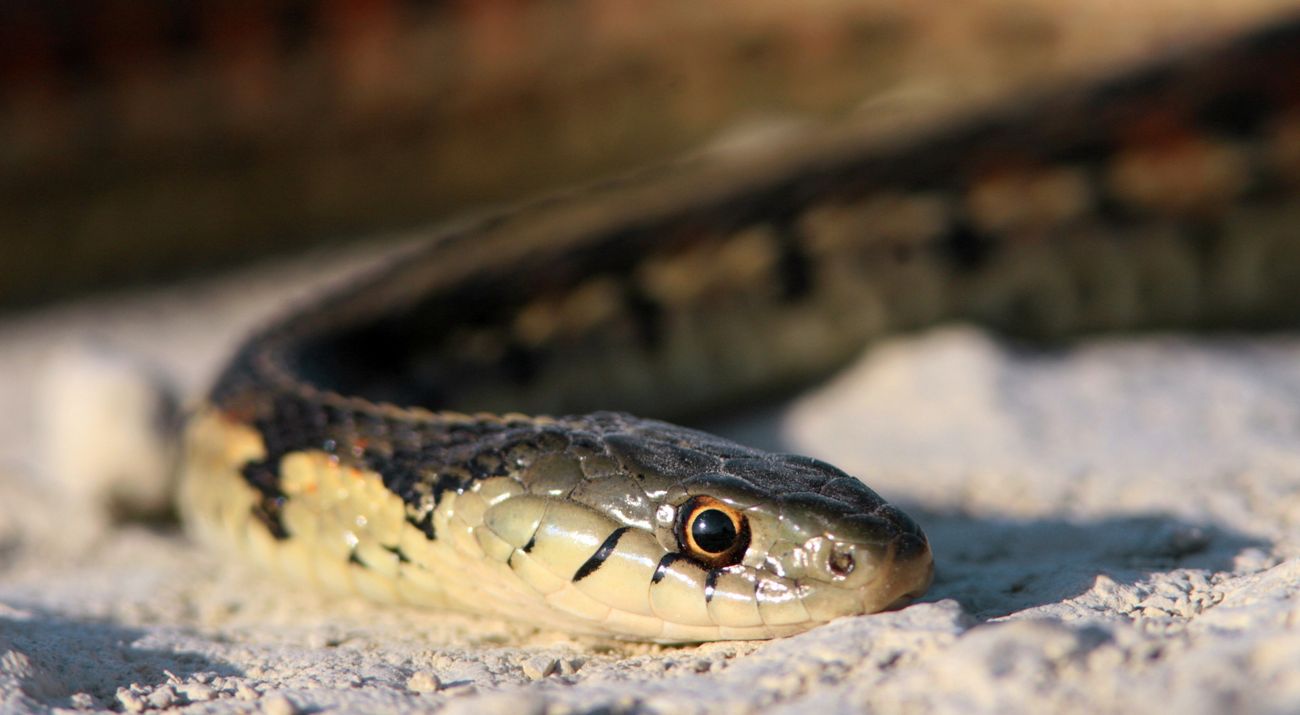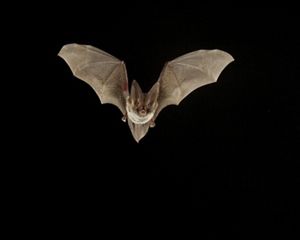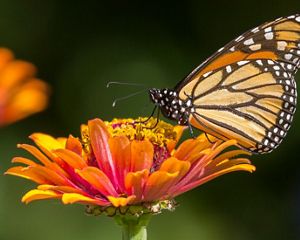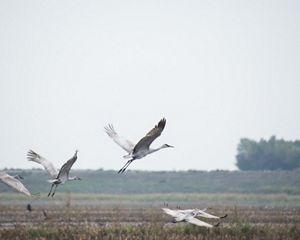10 Creepy Animals That Farmers Need
Not all farm animals are cute and cuddly. Some of the most important animals on any farm can be slightly scary but have vital jobs farmers depend on.
When darkness falls across the farm, many think of cows, pigs, sheep, chickens and goats settling in the barn. But there is also a whole host of others —large and incredibly small animals going about their crucial roles to support the healthy functioning of our farms night and day. While many think of them only as creepy crawlies or predators of the night, the web of life is intricate. You might be astounded to learn more about these beneficial animals that help people and the crops we grow.
Take a farm’s soil, for example. Oozing with organisms—soil is the most biologically diverse part of the Earth. The soil on a farm includes thousands and thousands of beetles, springtails, mites, worms, spiders, ants, nematodes and other organisms. This multitude of soil organisms engineers pathways for rainwater, provides nutrients for plants and breaks down organic matter from previous crops.
These beneficial insects and soil creatures—and bigger predators that patrol the soil surface—provide checks and balances to the food web that makes farms fertile.
What may be most frightening is to imagine a world without these beasties fulfilling their roles on farms.
1. Earthworms
It’s hard to get the warm fuzzies for earthworms. They have no legs. They don’t have eyes or a face, and their bodies stretch like rubber. They secrete a slime—mucus—that helps them slide more easily through the soil. But these faceless fellows can be big friends to farmers.
Earthworms break up hard soil, create tunnels that allow air and water to penetrate better, and bring important minerals to the soil. Most of the 180+ species of earthworms in the U.S. bring great benefits to soil health on farms and can help improve fertilizer efficiency.
Indeed, some non-native species of earthworms can negatively affect the soils in some forests. But when it comes to farms, earthworms are friends.
2. Millipedes
Their name comes from Latin, meaning “thousand legs.” As it turns out, no known millipede species has a thousand legs. Most top out at several hundred. Although millipedes may look unpleasant, these arthropods (they are not insects) are harmless to humans and are, in fact, very beneficial to farm soils.
Millipedes shred the leftover residue of previous crops—organic matter—and mix it through the soil. This gives smaller soil organisms like fungi and bacteria a greater surface area to work on and speeds the breakdown of the crop residue, ultimately making the soil more fertile.
3. Ladybugs
Even people afraid of most insects usually aren’t creeped out by ladybugs. But for those with Coccinellidaephobia, a fear of ladybugs, walking through a garden or farm can be terrifying. It makes sense—in nature, red and black is often a sign to stay away. However, these diminutive flying beetles bring huge benefits to farmers and gardeners. Ladybugs are so prized by gardeners and farmers that you can buy them from suppliers!
Why? They’re nature’s perfect pest control. Ladybugs (also known as lady beetles and ladybird beetles) gobble up crop-destroying aphids, one of the most problematic insect pests for farms and gardens. A single ladybug can consume 50-60 aphids daily and thousands over a lifetime. One ladybug can lay hundreds of eggs in a season, and its larvae will eat hundreds of aphids before becoming adults. In addition, ladybugs feed on mites, scales, mealy bugs, thrips and white flies, all of which damage crops.
Another sign of how highly ladybugs are esteemed: they are the official state insect of Delaware, Massachusetts, New Hampshire, North Dakota, Ohio and Tennessee.
4. Pollinators
As many schoolchildren can tell you, plants need pollinators. Why? A quick refresher: pollen from a plant's male anther needs to be transferred to the female stigma for a plant to reproduce via seeds.
About 87% of flowering plants rely on pollination, and more than 150 food crops in the U.S. That's where pollinators come in. They make the crucial exchange of pollen.
Several species of animals help with pollination, including hummingbirds, butterflies, moths, even flies and wasps. But bees do the heavy lifting, transferring far more pollen than other animals. Although European honeybees and bumblebees are the best-known U.S. bee varieties, our nation harbors more than 4,000 species of bees!
Protecting undeveloped pollinators' habitats, such as wildflower meadows on the edges of farmland, is vital to protect these industrious, fruitful creatures.
5. Spiders
What is it about spiders that unnerves people? Is it their sticky, often hard-to-spot webs, or the way they pounce so quickly when prey is near? Something about spiders unsettles most people. Yet spiders are incredibly beneficial to us.
“If spiders disappeared, we would face famine,” Norman Platnick of New York’s American Museum of Natural History told the Washington Post. “Spiders are primary controllers of insects. Without spiders, all of our crops would be consumed by those pests.”
A study found that more than 600 species of spiders patrol U.S. croplands, keeping crop-eating pests under control.
6. Coyotes
Though they have a reputation as a pest animal and a nuisance, coyotes are, in fact, a species that can bring benefits to farms.
Coyotes are skilled predators, keeping populations of rodents that can destroy crops—such as rabbits, squirrels, gophers, voles and mice in check. Removing coyotes from an area can cause rodent populations to explode.
While it’s true that coyotes are omnivorous and will sometimes eat fruit, berries and vegetables, 90% of their diet comes from meat. They do not pose a threat to farmers’ crops.
Related to dogs and wolves, coyotes have found a way to coexist with humans and expand their range. Formerly inhabiting the western portion of the U.S., coyotes can now be found in every state except Hawaii and have moved south, far into Central America.
Ranchers sometimes may have a legitimate gripe with coyotes because, in packs, they are capable of attacking and killing livestock. The common solution: good fencing plus the coyote’s cousin, a livestock guard dog or two patrolling the territory.
7. Snakes
Snakes get a bad rap. Many people seem to have an almost visceral aversion to the sinuous reptiles. But snakes are generally shy creatures that avoid human contact.
There are about 50 species of snakes in the U.S., and 20 of those are venomous—but even they shy away from human contact. While snakes are sneaking about our fields and avoiding us, they are preying on gophers, field mice, rats, rabbits and other rodents that damage crops by feeding on them or burrowing into their roots.
8. Skunks
Anyone whose dog has ever been sprayed by a skunk knows: it’s Grade A horrible. No one wants to be anywhere near a skunk. We fear skunks with good reason. But these slow-moving, stinky beasts can bring benefits to farms.
Skunks consume pest insects like caterpillars and grubs, field mice and voles, helping to keep them under control. They also eat berries, leaves and grasses. Beekeepers do not like skunks, however. Because of their thick fur, skunks aren’t deterred by bee stings and will seek out honeybee hives to dine on.
9. Bats
These winged mammals are the poster child for Halloween and have been associated with all things scary at least as far back as Bram Stoker’s classic horror novel Dracula, published in 1897.
Some people fear that, like Dracula, bats will drink their blood. But none of the 40 bat species inhabiting the U.S. drink blood. Three species are nectar feeders that help pollinate desert plants, while most U.S. bats eat insects in abundance. A single insect-eating bat can consume hundreds of pest insects in a night, equivalent to half its body weight. A cave full of thousands of bats can consume literal tons of insects.
Economists have quantified the dollar value of bats’ insect pest control to U.S. agriculture at $23 billion annually.
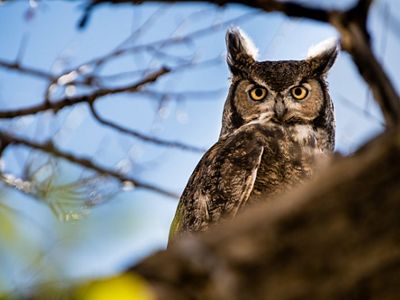
10. Owls
The banshee screech of an owl can sound supernatural in the pitch blackness of night on a farm, but owls are super-carnivores that benefit farmers significantly.
Owls serve an important role in controlling rodent populations and protecting crops. They are a natural pest defense system as they are highly skilled hunters of the night when rodents and other small mammals are on the move.
With their ghostly night stalking enabled by their giant wingspan, it's no wonder owls are effective carnivores. Owls can eat up to 10% of their body weight in rodents each night. Because hunting is what they do best, they have also been known to prey on snakes, amphibians and invertebrates.
Want more stories like this?
Get our monthly newsletter full of good nature news. Check out a sample Nature News email.
